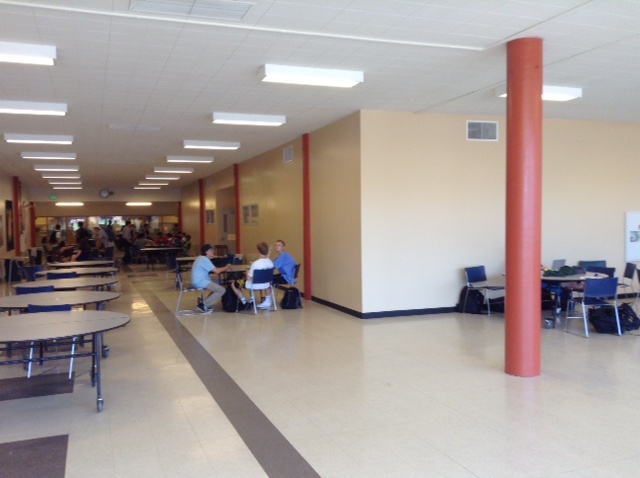Building From The Ground Up
With the rising number of students attending Lincoln this year the cafeteria space has been over summer in order to pave way for two new classrooms. The classrooms have been added in the space that was previously used by students during lunch, along with Culinary Arts which makes use of an older classroom and the cafeteria kitchen.
Construction was scheduled to begin in June but was delayed a month after problems regarding ventilation was discovered. “The construction workers had to stay and work until midnight on weekends to complete the project,” Principal Peyton Chapman said. “The time it took to complete made it hard for the teachers who had to wait before they could enter their classrooms.”
Students who have had class in the new classrooms have noticed flaws. “The classes looked a bit dirty and underdone,” sophomore Benito Marcus said. “Every time I pick my bag up, there’s always dust on the bottom of it.”
“We were at 160 percent capacity last year, so these classes were a way to help and create more space for students,” Chapman said. The school has run out of storage closets to add more classrooms, making the cafeteria the last location in the school that was accessible, she explained, adding that the last count of the number of students who eat in the cafeteria during lunch last year was around 100 making it a spot that could be used for new classrooms. “ Every year we have talked about Lincoln’s overcrowding, we feel like we’re not overcrowded but under-facilitated,” Chapman said. In order to get the money for the construction of the new classrooms, the school hosted an auction in which other schools bid for funds. It is estimated that the costs of remodeling and construction exceeded $250,000.
The expansions in the Pearl District and the increase of jobs in the area have also brought overcrowding issues. With more people moving into westside Portland and new developments in the Pearl, and companies such as Intel, OHSU, and Nike hiring people have moving closer to Lincoln. “Having more students a fewer facilities has been making it harder for the school to offer a full IB program” Chapman said. This year there are 1589 students attending which leaves us in an overly capacitated state.
The new classrooms have also brought with them concerns regarding the amount of space students now have to eat lunch. “It’s cool that they’re adding new classrooms, but it’s lacking a lot of space for lunch,” said senior Jacob Diamond. “There’s a need for new classrooms, but this doesn’t seem like the best option, there’s less room to hang out now, especially during free periods,” senior Nathan Cekoric said. “Only a small portion of people can even eat down there now,” Diamond said.
With the space of the cafeteria being taken up by the new classrooms plans are underway to expand eating areas around campus. “Allowing lower classman to eat upstairs has always been an issue since it would bring more work to the custodians,” Chapman said. “We have been talking about adding outdoor sitting areas for students to eat during lunch.
With new expansions, projects such as the classrooms will be put on pause while discussions regarding whether or not to build a new school take place. “We don’t want to put too much money into the school since we want to be one of the schools that will be rebuilt” Chapman said. With the expanding class sizes and growth of the student population the new classrooms will serve as a temporary supplement for the overcrowding.

